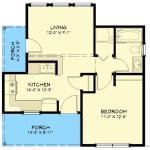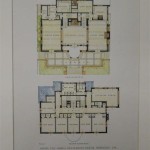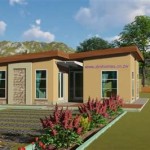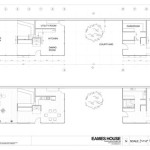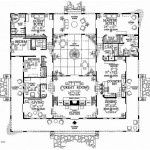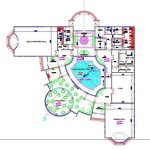Essential Aspects of Tiny One Floor House Plans: A Comprehensive Guide
Tiny one floor house plans have gained significant popularity in recent years, offering a charming and efficient solution to modern living. As you embark on designing your dream home, understanding the crucial aspects of these plans is essential to create a functional and comfortable space that meets your needs.
1. Space Planning and Layout
Efficient space planning is the cornerstone of tiny one floor house plans. Every inch of space must be utilized wisely, ensuring a seamless flow between different areas. Open floor plans are a common choice, creating a spacious and airy feel. Define distinct zones within these open spaces, such as the living room, kitchen, and sleeping area, using furniture placement or room dividers.
2. Natural Light and Ventilation
Natural light is crucial for a healthy and inviting living environment. Incorporate large windows and skylights throughout the plan to maximize daylight penetration. Proper ventilation is equally important to maintain air quality and prevent moisture buildup. Consider cross-ventilation by placing windows on opposite sides to encourage airflow.
3. Smart Storage Solutions
In a small space, storage is paramount. Opt for built-in storage options, such as wall-mounted shelves, under-bed drawers, and multi-functional furniture. Utilize vertical space by installing floor-to-ceiling cabinets and using stackable containers. Keep clutter at bay with dedicated storage areas for specific items.
4. Energy Efficiency
Tiny houses are known for their energy efficiency, and proper planning is crucial to maintain this advantage. Employ energy-efficient appliances and lighting fixtures. Consider installing solar panels or geothermal heating and cooling systems to reduce your carbon footprint and lower utility costs.
5. Outdoor Living
Even with limited square footage, outdoor living spaces are essential for relaxation and recreation. Design a small patio, deck, or porch that extends your living area into the outdoors. Connect the interior and exterior seamlessly with large doors or windows.
6. Accessibility and Safety
Tiny one floor house plans are often single-level, making them ideal for individuals with mobility concerns. Ensure all areas are easily accessible, with wide doorways and hallways. Safety features, such as non-slip flooring, grab bars, and adequate lighting, should be incorporated for peace of mind.
7. Personalization and Aesthetics
Your tiny house should reflect your personality and style. Choose a design aesthetic that suits your taste, whether it's modern, rustic, or traditional. Incorporate decorative elements, such as artwork, plants, and textiles, to create a cozy and inviting atmosphere. Personalize your space with unique touches that make it feel like home.
Conclusion
Tiny one floor house plans offer a charming and practical solution for those seeking a comfortable and sustainable living space. By carefully considering the essential aspects of these plans, you can create a home that is not only functional but also meets your unique needs. Embrace efficient space planning, natural light, smart storage, energy efficiency, outdoor living, accessibility, and personalization to design a truly special home.

Granny Flat 1 Bedroom And Bathroom Rennes Design Tiny House Floor Plans Container

Small Cabin House Plans Floor Construction Guest

Tiny House Plan Examples

Custom Granny S Tiny House Plans 24 X27 1 Bed

Tiny House Designs By Quick Housing Solutions Floor Plans Design

New Tiny House Plans Blog Eplans Com

Tiny House Plans That Are Big On Style Houseplans Blog Com

Unique One Story House Plans Monster

1 Bed Tiny House Plan With Fireplace 22129sl Architectural Designs Plans

House Plan 201027 Tiny 2 Bedrooms 1 5 Bathrooms Floor Instant Custom Plans Service

